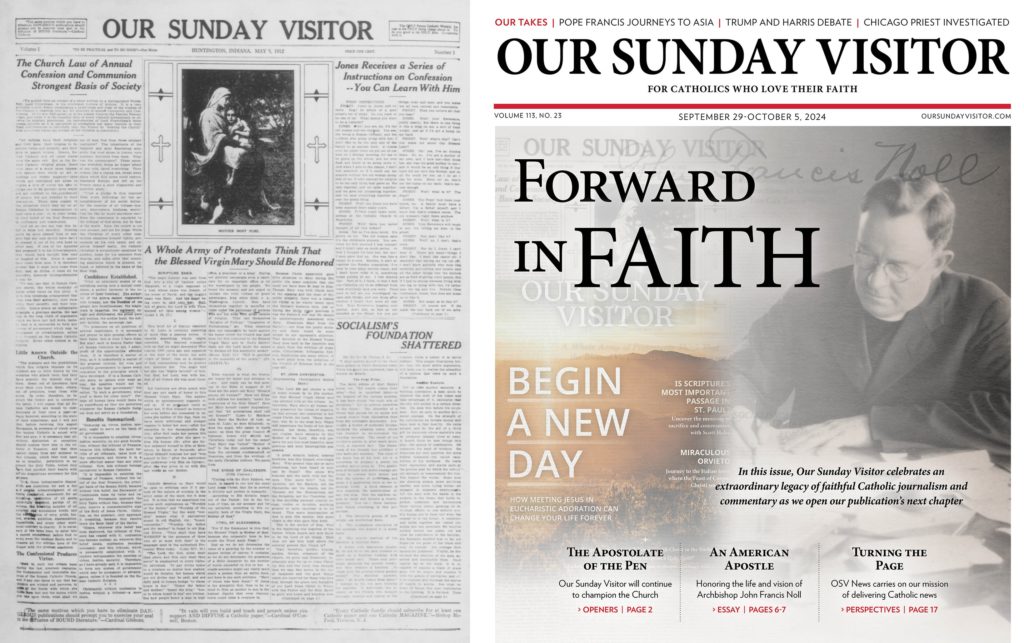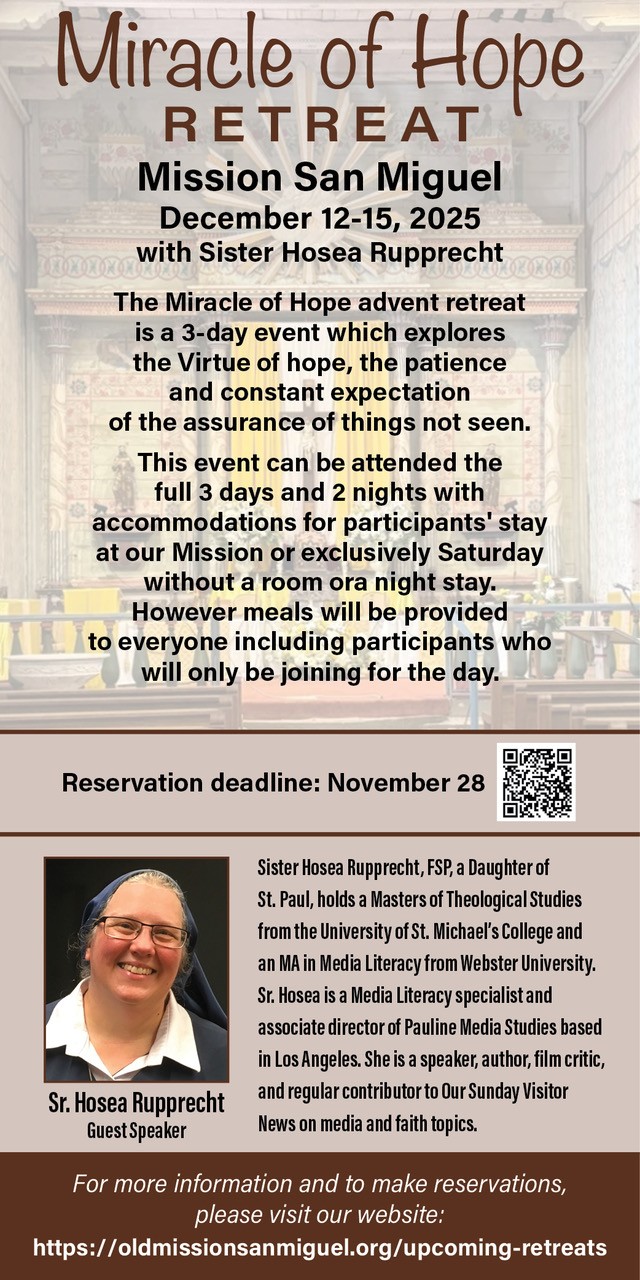Archbishop John Noll was one of many “builder bishops” of a century ago. He was involved in everything from the founding of the Catholic Press Association to the creation of the Catholic offering envelope business.
But perhaps his greatest accomplishment was the establishment of Our Sunday Visitor, a national juggernaut founded in the small town of Huntington, Indiana. OSV (as nearly everyone called it) was a weekly newspaper with a circulation that peaked at 1 million copies a week. Noll also published a magazine for priests (originally called The Acolyte), and many books, pamphlets, and other religious materials.
The weekly paper, founded in 1912, was born in the heyday of anti-Catholicism (a byproduct of fierce opposition to immigration). Then-Father Noll was a pugnacious defender of the faith, quick to confront those — in person or in print — who misrepresented the Church and its teachings. He gave immigrant Catholics a means to defend their beliefs and a pride in their faith.
Last year, the newspaper was shuttered, replaced by a “Catholic lifestyle” magazine. This summer it was slated to be shuttered as well, along with the company’s remaining periodicals, including the magazine for priests Noll had founded. (The company says it will continue to publish books, curricula and the Our Sunday Visitor News Service.)
I worked for Our Sunday Visitor for 27 years, and the news of these closures was both unsurprising and deeply saddening. Like publishing companies everywhere, both secular and Catholic, the company has struggled with all the technological and cultural changes that have hollowed out so many traditional news publications. The drop in Mass attendance, the decline in Catholic marriages and the shrinking of Catholic school and religious education attendance bode ill as well.
Costs for traditional print publications — from printing to mailing — have climbed, while countless digital rivals are available, often with payment optional. Perhaps more of a challenge is that there are so many other distractions, from streaming services to videogames to all-news channels. Once mighty newspapers are crumbling, with the Atlanta Constitution recently announcing it would discontinue its daily print newspaper. Even the Los Angeles Times seems a shrunken version of the paper that once dominated LA’s political and cultural worlds.
Likewise for the Church, diocesan publications struggle to stay afloat, often changing formats and frequency, sacrificing timeliness for lower costs. Many have simply shut down. National Catholic publications that survive almost always have other revenue streams or endowments that keep them in business.
In the world of “alternative facts,” big lies retold so many times they begin to sound true, and fly-by-night podcasts untroubled by editors and fact-checkers, the disruption in the news business has many implications for our society. And we are now entering the age of Artificial Intelligence, when our ability to discern truth from lies will be severely tested.
The issue becomes one of accountability. In Noll’s time, he was a man well educated in the Faith, and his oversight was seen as a guarantee that what was being printed was true to the Church’s teaching. Our Church today is more fractured. The bishops do not command the same respect, both because of the taint of the clergy sexual abuse crisis and because bishops find it increasingly difficult to make themselves heard. Self-appointed podcast experts are our new mini-popes, and everyone can find someone to validate their “flavor” of Catholicism.
Some days it feels like we are, in my favorite Matthew Arnold quote, “wandering between two worlds, one dead, the other powerless to be born.”
And yet there are signs of hope. One of them is exemplified by Angelus. The Archdiocese of Los Angeles provides its material in whatever format — print, digital, newsletter, or web — that you prefer. The archdiocese has taken communications seriously, and has invested in a multifaceted strategy for reaching you. It recognizes that news coverage and commentary are critical for both informing and forming Catholics.
Another sign of hope is that the OSV News Service (the successor to Catholic News Service’s domestic office), continues to provide news stories, reviews, and commentary to diocesan digital and print sites that would not be able to do so on their own.
And while we have many communicators who act as if they’ve been blessed with infallibility, who do not shy away from attacking popes and trolling bishops, there are still many more working in Catholic media who seek to be faithful and fair, not afraid of controversy but not willing to play in its muck for the sake of clicks and dollars.
Archbishop Noll understood that having the tools to communicate effectively is indispensable to informing the faithful and engaging the world at large. Our new world of communication has not yet been fully birthed, nor the old one yet laid to rest. In God’s good time, we will see a renewal.

